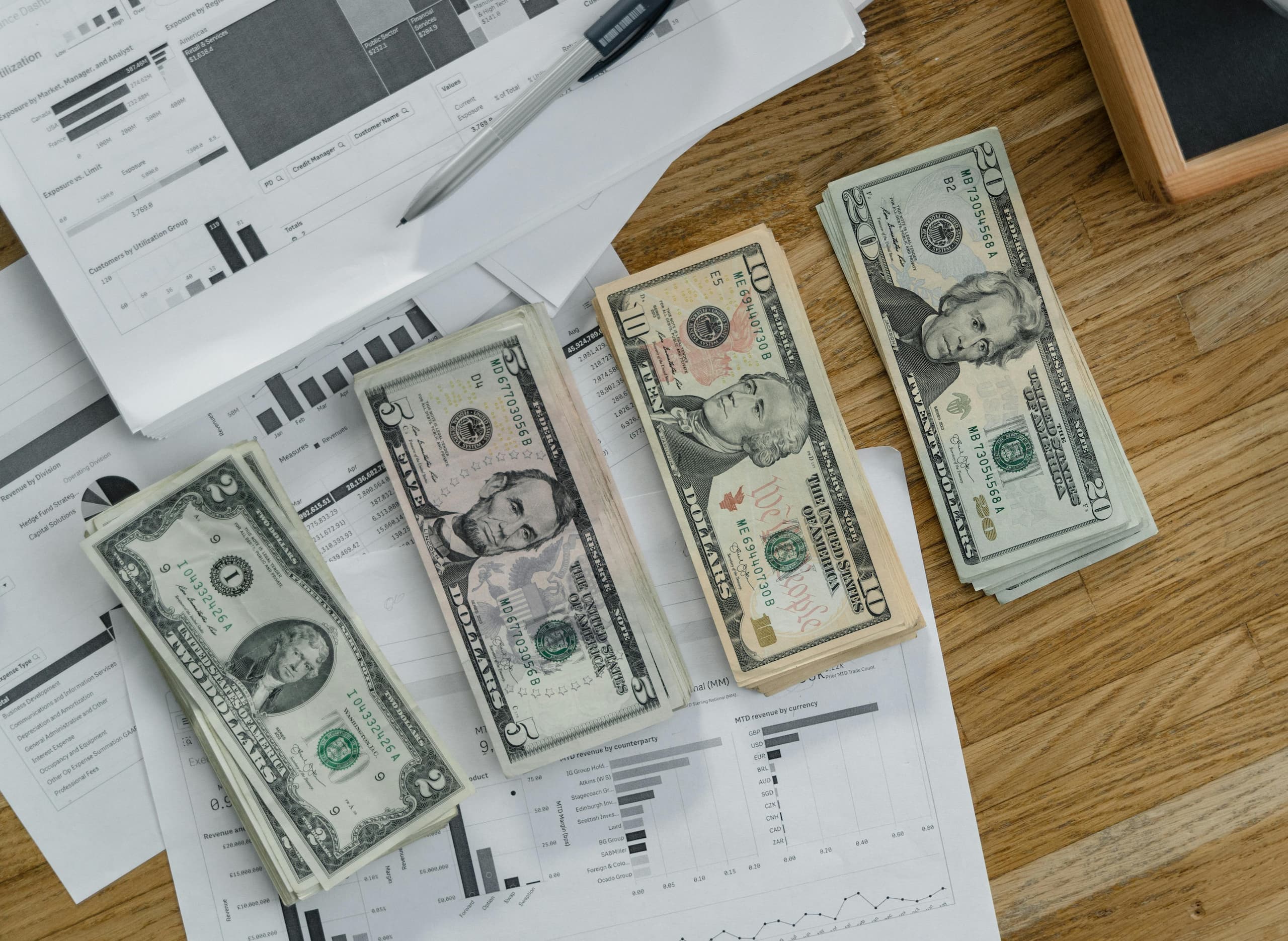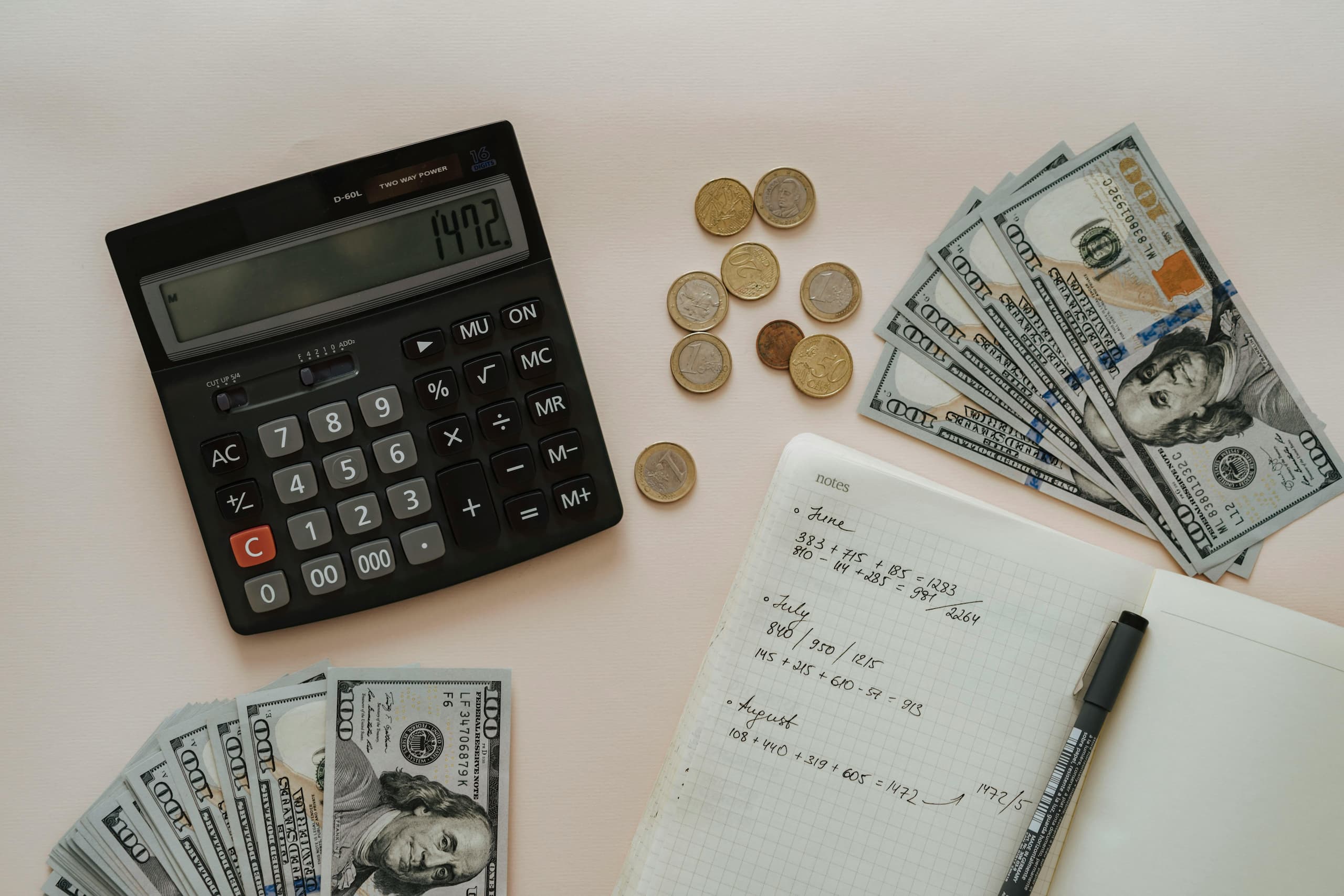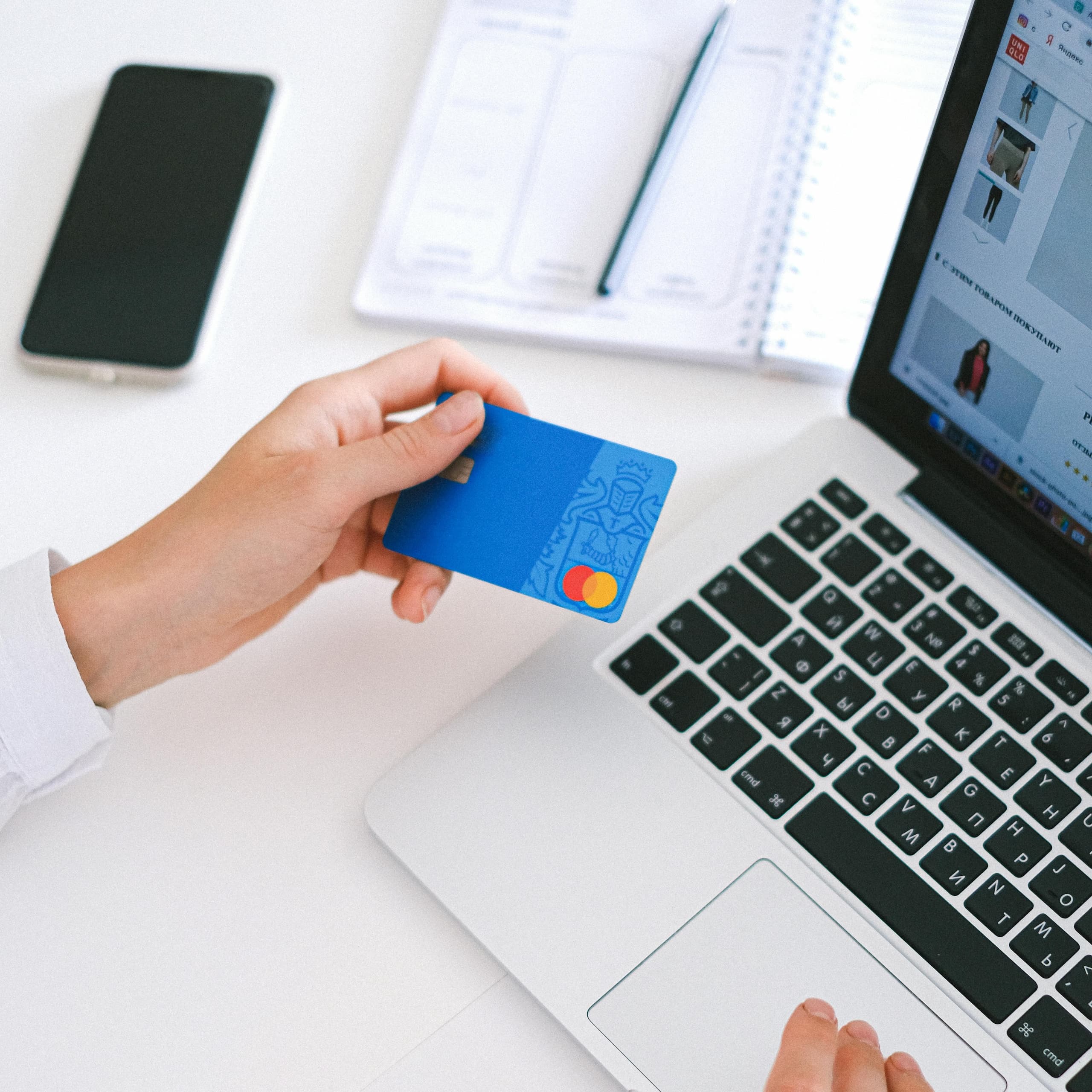-

What does financial success really mean? For some, it’s buying a home. For others, it’s living debt-free or retiring early. Whatever it looks like for you, achieve financial success with the right mindset, tools, and strategy.
In this guide, we break down 7 key steps to achieving financial success no matter where you’re starting from. For a full walkthrough, check out our video How to Achieve Financial Success: 7 Steps to Take Control of Your Money on our YouTube channel, Win at Finance.
1. Define What Financial Success Means to You
Before you make a single financial move, get clear on your goal. Ask yourself:
- Do I want financial security?
- Am I aiming for flexibility or early retirement?
- Is it about reducing stress or building generational wealth?
Write down your vision of financial success. This clarity will guide your decisions and help you stay motivated when things get tough.
2. Know Your Numbers
You can’t improve what you don’t track. Start by understanding your current financial picture:
- How much do you earn each month?
- Where does your money go?
- What do you owe (debts)?
- What do you own (assets)?
Tracking your net worth is a powerful way to measure progress. Not sure how? We explain it in detail in our video: How to Calculate Your Net Worth.
3. Build a Budget That Works
A budget isn’t punishment—it’s a tool for freedom. It gives every dollar a job and helps you align your spending with your values.
Popular budgeting strategies include:
- 50/30/20 Rule: Needs, wants, and savings
- Zero-Based Budgeting: Every dollar accounted for
- Pay-Yourself-First: Save before you spend
Pick the one that fits your lifestyle and adapt as needed. Consistency is more important than perfection.
4. Create an Emergency Fund
Unexpected expenses happen—car repairs, medical bills, job loss. An emergency fund gives you breathing room when life throws curveballs.
Aim to save 3 to 6 months of essential expenses in a separate high-yield savings account. Start small if you need to—even $500 can make a difference.
Need a deeper dive? Check out our article: How to Build an Emergency Fund.
5. Eliminate High-Interest Debt
Credit card debt and payday loans can sabotage your financial progress. Prioritize paying off high-interest debt using one of these proven methods:
- Snowball Method: Pay off the smallest balances first to build momentum.
- Avalanche Method: Focus on the highest-interest debts to save the most money.
There’s no right or wrong—just choose the strategy you’ll stick with.
6. Invest for the Long Term
Once you’re out of crisis mode, it’s time to build wealth. Investing allows your money to grow passively over time.
Start with retirement accounts like a 401(k) or Roth IRA, then expand into index funds or ETFs. The key is to start early and be consistent.
Remember: you don’t need to be perfect at investing. You just need to be consistent.
7. Automate and Systematize
The more you can automate your finances, the more consistent your results will be. Set up automatic transfers to savings, auto-pay for bills, and recurring investments.
Automation reduces mental load and makes it easier to stick to your financial plan.
Bonus: Shift Your Mindset – Achieve Financial Success
Achieving financial success isn’t just about numbers—it’s about mindset. Believe that you can improve. Stay curious. Be willing to learn and adapt.
Read books like The Psychology of Money or Your Money or Your Life to help develop a long-term wealth mindset.
Final Thoughts
Financial success isn’t a destination—it’s a journey of habits, decisions, and progress over time. Start where you are, use what you have, and stay consistent.
👉 Watch the full video: “How to Achieve Financial Success” for a visual step-by-step guide.
Looking for your next step? Check out: Budgeting Basics: How to Take Control of Your Money.
Let us know in the comments: What does financial success mean to you?
-

If you’ve ever wondered why credit matters and why your credit score seems to follow you everywhere, you’re not alone. Credit might feel like an invisible force, but it plays a very real role in your financial life. Whether you’re applying for a loan, trying to rent an apartment, or even interviewing for a job, your credit can be a make-or-break factor.
In this article, we’ll explain what credit is, why it matters, and how you can use it as a tool—not a trap. We also recommend checking out our full video, “Why Credit Matters: What They Don’t Teach You in School“, on our YouTube channel for a deeper breakdown.
What Is Credit?
Credit is essentially your financial reputation. It reflects how well you’ve managed borrowed money over time, and it’s measured by your credit score, a number typically ranging from 300 to 850. This score is generated using your credit history—data collected by the three major credit bureaus: Experian, Equifax, and TransUnion.
Your credit score tells lenders how risky it would be to loan you money. A high score means you’re seen as low risk, which can translate into lower interest rates, better loan terms, and easier approvals. A low score may limit your options and cost you more in the long run.
Why Credit Matters So Much
Many people assume credit only comes into play when you’re buying a house or applying for a credit card. But in reality, your credit affects much more:
- Car Loans: A low credit score can mean a higher interest rate, potentially costing you thousands more over the life of the loan.
- Apartment Rentals: Landlords often check credit to assess if you’re likely to pay rent on time.
- Utilities and Phone Plans: You may have to pay a large deposit if your credit is poor.
- Insurance Premiums: Some companies use credit scores to determine your rates.
- Job Applications: In certain industries, employers may review your credit report during the hiring process.
In other words, your credit doesn’t just affect your access to money—it affects your access to opportunity.
What Impacts Your Credit Score?
Understanding what affects your credit score is the first step to managing it. Here’s how it typically breaks down:
- Payment History (35%) – Do you pay your bills on time? Late or missed payments hurt your score.
- Credit Utilization (30%) – How much of your available credit are you using? Aim to stay under 30%.
- Length of Credit History (15%) – Older accounts improve your score.
- Credit Mix (10%) – A variety of account types (credit cards, loans) helps.
- New Credit Inquiries (10%) – Too many applications in a short time can lower your score temporarily.
How to Start Improving Your Credit
The good news? You can improve your credit over time with a few smart moves:
- Pay on time, every time
- Keep credit card balances low
- Limit new credit applications
- Check your reports for errors at AnnualCreditReport.com
- Consider asking for a credit limit increase to improve your utilization ratio
For a step-by-step guide, be sure to watch our YouTube video, “Why Credit Matters“, where we explain how credit works, real-world examples of how it affects your finances, and quick-win tips to boost your score.
Final Thoughts
Credit can feel like a mystery, but once you understand how it works, it becomes a powerful tool for financial freedom. Whether you’re starting from scratch or trying to rebuild, it’s never too late to take control of your credit.
Want to build a stronger financial foundation? Check out our related guide: Budgeting Basics: How to Take Control of Your Money.
And don’t forget to subscribe to our YouTube channel for more simple, practical advice to help you win at finance.
-

Living paycheck to paycheck can feel like running on a treadmill—you’re working hard but never getting ahead. Whether you earn $30k or $100k per year, the cycle of just barely making it to the next payday can be stressful and exhausting. The good news? You can break free from it. In this guide, you’ll learn a practical five-step plan to stop living paycheck to paycheck for good.
Step 1: Understand Your Spending Habits
Before you can improve your financial life, you need to understand where your money is going. That means taking a close look at your income, fixed expenses (like rent, utilities, and debt payments), and variable expenses (like groceries, entertainment, and dining out).
Use a free budgeting tool like Mint, Monarch, or a simple spreadsheet to categorize every dollar. This process might be eye-opening—but it’s essential. Once you have a clear picture of your spending, you can start making intentional choices.
Pro Tip: Don’t just track expenses once—make it a habit. A weekly check-in with your budget can reveal patterns and highlight areas where you can cut back.
Step 2: Cut the Unnecessary Spending
Now that you know where your money goes, it’s time to plug the leaks. Look for spending categories that can be reduced or eliminated without drastically affecting your quality of life.
Here are a few common culprits:
- Unused subscriptions
- Takeout or delivery multiple times a week
- Impulse online shopping
- Premium services you don’t fully use
Even reducing your spending by $100–$200 per month can provide the breathing room you need to start saving and getting ahead.
Step 3: Build a Starter Emergency Fund
One unexpected expense can completely derail your finances if you’re living paycheck to paycheck. That’s why the next step is to build a small emergency fund—enough to protect you from life’s surprises.
Start with a goal of $1,000. This fund should be separate from your checking account and only used for true emergencies, like car repairs, medical bills, or urgent home needs.
Why it matters: Having an emergency fund means you won’t need to rely on credit cards or loans when the unexpected happens.
Step 4: Create a Monthly Cash Flow Plan
A cash flow plan (aka a budget) helps you assign a purpose to every dollar. It gives you control and helps you avoid falling back into old habits.
One of the easiest methods to try is the 50/30/20 budget:
- 50% of your income goes to needs
- 30% goes to wants
- 20% goes to savings and debt repayment
You can adjust this ratio based on your circumstances, but the key is planning ahead. Set up automatic transfers for bills, savings, and debt payments so you stay consistent.
Step 5: Increase Your Income
You can only cut so much from your expenses. At some point, the real accelerator is earning more money. Thankfully, we’re living in the age of opportunity—there are dozens of ways to generate extra income.
Consider:
- Asking for a raise or promotion
- Starting a freelance or side hustle business
- Selling unused items online
- Monetizing skills like writing, design, or tutoring
Use any additional income to pay down debt, save faster, or build a cushion that helps you stay ahead.
Bonus Tip: Get One Month Ahead on Expenses
A powerful goal is to start living on last month’s income. That means you’re paying next month’s bills with the money you earned this month—not scrambling to stretch each paycheck.
How to do it:
- Funnel savings and side income into a separate account
- Build until you have one month’s worth of expenses saved
Once you’re one month ahead, the stress of living paycheck to paycheck vanishes. You can plan, breathe, and make smarter financial choices.
Watch: How to Stop Living Paycheck to Paycheck (Video)
🎥 We’ve created a short YouTube video to walk you through how to stop living paycheck to paycheck under 10 minutes.
👉 Watch now: How I Finally Broke the Paycheck-to-Paycheck Cycle in 5 Simple Steps 💸💸
Take the Next Step: Build a Budget
If you’re ready to get serious about breaking the paycheck to paycheck cycle, the next step is building a strong, realistic budget.
Our guide will show you how to create a plan that works — without feeling restricted or overwhelmed.
👉 Read next: Budgeting Basics: How to Take Control of Your Money
Final Thoughts
Stopping the paycheck-to-paycheck cycle won’t happen overnight—but it is absolutely achievable with consistency and a clear plan. By understanding your finances, cutting waste, saving intentionally, and boosting your income, you can take control of your money—and your future.
Want more practical financial advice? Subscribe to our newsletter at Win at Finance and get weekly tips to help you master your money.
-

When it comes to your personal finances, one number matters more than your salary, your savings balance, or even your monthly budget: your net worth.
This single figure gives you a full-picture view of your financial health — and tracking it over time can be incredibly motivating.
In this article, we’ll break down exactly how to calculate your net worth, why it’s so important, and how it can help you take control of your money and your future.
What Is Net Worth?
Net worth = Assets – Liabilities
That’s it. It’s a simple formula, but it tells a powerful story.
Assets are everything you own that has value:
- Cash and savings
- Retirement accounts (401k, IRA, etc.)
- Investments (stocks, bonds, crypto)
- Property (home, car, etc.)
- Valuable items (jewelry, collectibles)
Liabilities are everything you owe:
- Credit card balances
- Student loans
- Auto loans
- Mortgage
- Personal loans
Subtracting what you owe from what you own gives you your net worth.
Why Your Net Worth Matters
Your net worth shows you where you really stand — beyond just how much you earn or how much is in your checking account.
1. It Helps You See the Big Picture
Maybe you’re earning a solid income, but your net worth is low or even negative. That could signal high debt or underinvestment. On the flip side, a modest income paired with a growing net worth shows healthy financial habits.
2. It Keeps You Focused on Growth
Tracking your net worth can feel like watching your personal financial score rise. Every debt you pay off or dollar you invest nudges that number higher. That’s real progress — and it’s motivating.
3. It’s Essential for Setting Goals
Want to hit a $100,000 net worth milestone? Become debt-free by age 40? Retire early? These goals start with knowing your current net worth and making a plan to improve it.
What Is a Good Net Worth?
There’s no one-size-fits-all answer, but benchmarks can help you understand whether you’re on track. A common rule of thumb comes from Fidelity, which suggests your net worth should be roughly equal to your annual income by age 30, 2x by 35, 3x by 40, and so on. For example, if you earn $75,000 per year, aiming for a net worth of $75,000 by age 30 and $150,000 by age 35 is a strong goal.
But these are just general guidelines. Your goals, lifestyle, and financial responsibilities may shift what’s realistic for you. The most important thing is that your net worth is trending upward over time and aligned with the future you’re working toward — whether that’s buying a home, retiring early, or building generational wealth.
How to Track Your Net Worth
You can calculate your net worth with a basic spreadsheet or use free tools like:
- Personal Capital
- YNAB (You Need A Budget)
- Monarch Money
- Tiller (Google Sheets-based)
Make it a monthly habit — pick a date and log your totals. You’ll be amazed at how motivating it is to see progress over time.
Watch: How to Calculate Your Net Worth (Video)
🎥 We’ve created a short YouTube video to walk you through calculating your net worth in under 10 minutes — including a simple template you can copy.
👉 Watch now: How to build real WEALTH – it’s easy, track this 1 number!
Take the Next Step: Build a Budget
If you’re ready to get serious about improving your net worth, the next step is building a strong, realistic budget.
Our guide will show you how to create a plan that works — without feeling restricted or overwhelmed.
👉 Read next: Budgeting Basics: How to Take Control of Your Money
Final Thoughts
Your net worth is your financial foundation — and whether it’s currently negative, small, or growing fast, knowing it is empowering.
Remember, this isn’t about comparison. It’s about tracking your own progress and building the kind of future you want, one step at a time.
So take five minutes today, crunch your numbers, and start watching your net worth grow.
-

Imagine your car breaks down, you lose your job, or a surprise medical bill shows up. What happens next?
If you have an emergency fund, you don’t panic—you stay in control with your financial safety net.
In this guide, we’ll break down what an emergency fund is, why it’s crucial, how much you need, and how to build one even if you’re living paycheck to paycheck.
What Is an Emergency Fund?
An emergency fund is money set aside to cover unexpected expenses or financial emergencies, such as:
- Job loss
- Medical emergencies
- Car repairs
- Urgent travel or home repairs
It’s not for vacations, new clothes, or takeout. Think of it as financial armor—your first line of defense when life goes sideways.
Why You Need One
Without an emergency fund, most people rely on:
- Credit cards (high interest!)
- Personal loans
- Borrowing from family
- Cashing out retirement savings (big mistake)
Even $500 to $1,000 can prevent a bad day from becoming a financial disaster. Take action today, build your financial safety net, and your future self will thank you.
How Much Should You Save?
It depends on your situation. Use this guide:
Situation Emergency Fund Goal Just starting out $500–$1,000 starter fund Steady income 3 months of living expenses Self-employed/freelancer 6–12 months of expenses 🧠 Example: If your monthly expenses are $2,500, aim for $7,500–$15,000 over time.
Where to Keep Your Emergency Fund to Ensure Financial Safety
✅ Keep it accessible, but not too accessible. You don’t want to make it too easy to accidentally use these funds. Remember, this money is for true emergencies.
Here’s where to stash it:
- High-yield savings account (best option)
- Money market account
- Separate bank from your daily checking (to reduce temptation)
💡 I recommend SoFi or Ally Bank, both offering competitive savings rates.
How to Build an Emergency Fund (Step-by-Step)
Step 1: Set a Realistic Goal
Start small—$500 or $1,000 is a great win. Don’t get overwhelmed by the long-term goal just yet. Start small but think big! You’ll be surprised how quickly you get there.
Step 2: Create a Budget
If you don’t have a budget, start there.
👉 Read: Budgeting Basics – How to Take Control of Your MoneyLook for areas to cut or reduce so you can funnel money into your emergency fund. You can, and should, review and adjust your budget to reflect your most recent financial situation.
Step 3: Make Saving Automatic
Treat savings like a bill. When you start paying yourself first, like paying a bill, you will start to guarantee your financial safety. It’s all about adopting this mindset.
Set up automatic transfers from checking to savings, weekly or monthly.
Even $25/week = $1,300/year.
Step 4: Use Windfalls Wisely
Tax refund? Bonus? Side hustle income? Put at least a portion toward your emergency fund.
💬 Pro tip: Try the 50/30/20 rule—put 20% of windfalls directly into savings.
Step 5: Keep It Separate
Keep your emergency fund in a separate account—preferably one without a debit card. Out of sight, out of mind = less temptation.
What Counts as an Emergency?
✔️ True emergencies:
- ER visits
- Major car repair
- Job loss
- Last-minute travel for family crisis
❌ Not emergencies:
- Concert tickets
- Holiday gifts
- Sales or “limited time deals”
Be honest with yourself—this fund is for needs, not wants.
Final Thoughts: Start Small, Stay Consistent
Building an emergency fund won’t happen overnight. But every dollar you save adds up—and builds your confidence and resilience. You can achieve this with financial safety.
📣 “Saving for emergencies isn’t about fear. It’s about freedom.”
Recommended Tools:
- 🏦 SoFi Savings Account – Earn more while saving
- 💡 YNAB – Budget to grow your emergency fund
- 💳 Credit Karma – Stay on top of your financial health
-

Your credit score is one of the most important numbers in your financial life. It can affect your ability to rent an apartment, buy a home, get a loan, or even land a job.
Despite its significance, many people don’t check their credit score regularly—or at all. In this article, we’ll explain how to check your credit score for free and why keeping an eye on it is crucial to your financial health.
What Is a Credit Score?
A credit score is a three-digit number, typically ranging from 300 to 850, that reflects your creditworthiness. In simple terms, it shows lenders how likely you are to repay borrowed money. The higher the score, the more favorably lenders view you.
Credit scores are calculated based on your credit history, which includes factors like:
- Your payment history
- Amounts owed
- Length of credit history
- Types of credit used
- New credit inquiries
How to Check Your Credit Score
Checking your credit score is easy and doesn’t have to cost you anything. Here are several ways to do it:
Use a Free Credit Monitoring Service
Many websites and apps offer free access to your credit score. These include:
- Credit Karma (TransUnion and Equifax scores)
- Credit Sesame
- WalletHub
- Bankrate
These services often include tools for tracking your credit and tips for improvement. Don’t miss out on these free tips and tricks, that help propel your progress even faster.
Check with Your Bank or Credit Card Issuer
Many banks and credit card companies offer free credit scores as a perk to their customers. Log into your online account or mobile app to see if this feature is available.
Use AnnualCreditReport.com (for Your Credit Reports)
While this site doesn’t show your credit score, it does give you access to your free annual credit reports from Equifax, Experian, and TransUnion. These reports contain the data used to calculate your score. You can use them to check for errors or signs of identity theft.
Why Checking Your Credit Score Is Important
Detect Errors and Fraud
Mistakes on your credit report can lower your score or indicate fraudulent activity. Regularly checking your score and reports helps you catch problems early. Mistakes happen, take control of your credit history so you don’t get penalized for errors or fraud.
Prepare for Major Purchases
Planning to buy a house or car? Lenders use your credit score to decide whether to approve your application and what interest rate to offer. A better score means lower rates and potentially thousands saved. Remember, how much you can save is often even more important than how much you earn. Don’t miss out on a savings opportunity!
Improve Your Financial Habits
Seeing how your actions affect your score (like making on-time payments or reducing debt) can encourage smarter financial decisions. This is real life feedback on your financial health. You can use this to set your financial goals and achieve them.
Negotiate Better Terms
A strong credit score gives you negotiating power. You might qualify for higher credit limits, lower interest rates, or better insurance premiums.
How Often Should You Check Your Credit Score?
You can safely check your credit score as often as you’d like—checking it doesn’t hurt your score. Monthly check-ins are a smart habit, especially if you’re actively working on building or improving your credit.
Smart money habits lead to financial safety. If you don’t have an Emergency Fund, start building one today:
👉 Read: How to Build an Emergency Fund: Your Financial Safety Net
Final Thoughts
Knowing your credit score puts you in control of your financial future. It’s simple to check, completely free through many services, and a vital step in managing your money wisely. Whether you’re planning a big purchase or just want peace of mind, staying on top of your credit is always a smart move.
-

Budgeting isn’t about restriction—it’s about freedom. When you know where your money goes, you can stop living paycheck to paycheck, start building savings, and move closer to your financial goals. Whether you want to get out of debt, save for a big purchase, or just stop feeling anxious about money, budgeting is your first step.
Here’s a clear, no-fluff guide to the basics of budgeting and how to get started.What Is a Budget?
A budget is a plan for your money. It tells your money where to go instead of wondering where it went. Budgeting helps you align your spending with your goals, whether that’s traveling more, buying a home, or building long-term wealth.
Why Budgeting Matters
- Clarity: Know exactly where your money is going.
- Control: Make intentional choices instead of reacting to every expense.
- Progress: Create space to pay off debt, save, and invest.
- Peace of mind: Stop stressing about overdrafts or surprise bills.
Step-by-Step: How to Create a Simple Budget
Step 1: Know Your Income
Calculate your total take-home pay (after taxes). Include side hustles, freelance work, or other regular income sources.
💡 Tip: If your income varies, take the average of the last 3–6 months.Step 2: List Your Expenses
Break them down into two types:
Fixed Expenses (same every month)
- Rent/mortgage
- Utilities
- Insurance
- Subscriptions
Variable Expenses (change monthly)
- Groceries
- Gas/transportation
- Dining out
- Entertainment
Don’t forget non-monthly expenses like annual subscriptions or holiday gifts—divide those by 12 and include them monthly.
Step 3: Categorize and Track
Use categories like:
- Housing
- Food
- Transportation
- Debt Payments
- Savings
- Fun/Personal
Apps like You Need a Budget (YNAB), Mint, or EveryDollar can help automate this.
Step 4: Give Every Dollar a Job
This is the zero-based budgeting method. Every dollar you earn should be assigned to a category—nothing left “floating.”
Example:
- Income: $3,000
- Rent: $1,000
- Food: $400
- Savings: $500
- Debt: $300
- Utilities: $200
- Fun: $200
- Buffer: $400
✅ Total: $3,000. Every dollar has a job.
Step 5: Review and Adjust Weekly
Your budget is a living document. Review it weekly and adjust as needed. Unexpected car repair? Shift from your entertainment or dining out category.
Common Budgeting Mistakes to Avoid
- Ignoring small expenses (“Latte Factor” adds up!)
- Forgetting irregular expenses
- Not leaving room for fun—this leads to burnout
- Quitting after one bad month (progress takes time)
Final Thoughts: Budgeting Is a Habit, Not a One-Time Task
The first month of budgeting may feel uncomfortable, but it gets easier. Over time, budgeting becomes a tool of empowerment, not restriction. It helps you spend in line with your values—and build the life you want.
💬 Start where you are. Use what you have. Do what you can. The best budget is the one you stick to.